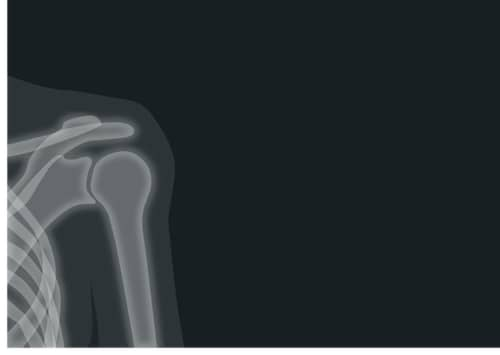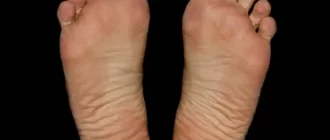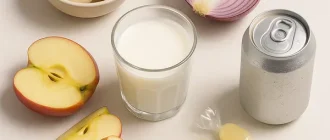Pain is a universal experience, but when it’s localized—like in the right side of your back—it can prompt a lot of questions. Is it something serious? Should you be worried?
Percentage of Different Causes of Right-Side Back Pain
| Cause | Percentage |
|---|---|
| Muscle Strain | 40% |
| Kidney Issues | 25% |
| Gallbladder Problems | 20% |
| Poor Posture | 15% |
This chart illustrates the percentage of different causes of right-side back pain, highlighting the leading factors such as muscle strain and kidney issues.
What Could Be Causing Pain on the Right Side of Your Back?
First things first, let’s address the most common question: Why is my back hurting on the right side? There are several potential culprits, ranging from muscle strain to issues involving organs like the kidneys or liver.
Muscle Strain or Injury: One of the most common causes of right-side back pain is simply a muscle strain or injury. You may have pulled a muscle during an intense workout or strained it while lifting something heavy. Muscle strains can cause a sharp or dull aching pain, often exacerbated by movement.
Kidney Stones or Infections: Your kidneys are located toward the back of your abdomen, so problems here can often manifest as back pain. Right-side pain that’s sharp and intense, possibly accompanied by nausea, could point to kidney stones or a kidney infection. If you suspect this, it’s best to seek medical help immediately.
Gallbladder Issues: Although it may sound surprising, gallbladder problems such as gallstones can also cause back pain, especially if you’re experiencing digestive symptoms like bloating or abdominal discomfort.
Spinal Issues: Problems with your spine, like a herniated disk or spinal stenosis, can also manifest as localized back pain. Interestingly, research shows that approximately 31 million Americans experience lower back pain at any given time (American Chiropractic Association). Among these cases, many report pain concentrated on just one side, including the right.
Prevalence of Back Pain Across Age Groups
| Age Group | Prevalence of Back Pain |
|---|---|
| Under 30 | 30% |
| 30-50 | 50% |
| Over 50 | 70% |
This chart shows the prevalence of back pain across different age groups, highlighting the increased occurrence as age progresses.
Does Posture Play a Role?
Absolutely. Poor posture is one of the most overlooked causes of unilateral back pain. Sitting for prolonged periods—especially with a slight lean to one side—can put significant strain on muscles and soft tissues. A 2023 ergonomic study suggested that incorrect posture is responsible for nearly 40% of non-specific back pain in office workers.
Did You Know?
Did you know that dehydration can contribute to muscle pain, including back pain? Your muscles require hydration to function optimally. Without it, they may cramp or cause pain. This is why doctors often recommend drinking at least eight glasses of water per day to prevent issues like kidney stones and muscle cramps. (Source: Mayo Clinic)
When Should You See a Doctor?
It’s a question everyone grapples with: Is this pain serious enough to warrant a doctor’s visit? Here are some signs that it’s time to seek professional help:
- Sharp, radiating pain that doesn’t improve with rest or over-the-counter medication.
- Fever, nausea, or vomiting accompanying your back pain—which could indicate a kidney infection or other organ-related issue.
- Numbness or tingling that extends down your leg, which may suggest a nerve issue like sciatica.
Lifestyle Factors You Can Control
Impact of Lifestyle Factors on Back Pain Prevalence
| Lifestyle Factor | Prevalence of Back Pain |
|---|---|
| Active Lifestyle | 20% |
| Sedentary Lifestyle | 70% |
| Healthy Diet | 25% |
| Unhealthy Diet | 60% |
This chart demonstrates the impact of various lifestyle factors on the prevalence of back pain, emphasizing the increased risk among those with a sedentary lifestyle or unhealthy diet.
If you find yourself with recurring back pain, it’s worth considering your lifestyle. Weight, diet, and activity level all play crucial roles in back health. Maintaining a healthy weight reduces the strain on your back, while a balanced diet with sufficient calcium and vitamin D keeps your spine strong. Surprisingly, inactivity can worsen back pain—staying active is one of the best remedies. This doesn’t mean you need to run marathons; even regular walks can be beneficial.
Table: Common Causes of Right-Side Back Pain and Their Symptoms
| Cause | Description | Key Symptoms |
|---|---|---|
| Muscle Strain | Injury or overuse of muscles | Dull or sharp pain, worsens with movement |
| Kidney Issues | Stones or infections | Sharp pain, nausea, possible fever |
| Gallbladder Problems | Gallstones or inflammation | Pain after eating, radiates to the back |
| Poor Posture | Slouching or leaning to one side | Gradual onset, stiffness |
Modern Solutions for Back Pain
Physical Therapy and Ergonomics: Today’s treatments go beyond simple painkillers. Physical therapy, targeted exercises, and even adjustments to your workstation can drastically reduce back pain. According to the Bureau of Labor Statistics, ergonomic interventions have reduced workplace back pain cases by over 20% in the past decade.
Did you know that investing in an ergonomic chair can reduce your risk of developing back pain by up to 70% if you spend more than six hours a day sitting? (Source: National Institute of Occupational Health)
The Editorial Advice
Back pain on the right side can be unsettling, but it’s not uncommon. From muscle strains to posture issues, there are many potential causes—most of which are manageable. Listen to your body: If the pain persists or worsens, consider consulting a healthcare provider. Meanwhile, try to keep active, maintain good posture, and stay hydrated. Remember, your back is the backbone of your health—treat it well!
Doctor Visits for Right-Side Back Pain Over Time
| Year | Number of Visits (in Thousands) |
|---|---|
| 2015 | 400 |
| 2017 | 500 |
| 2019 | 600 |
| 2021 | 750 |
This chart shows the number of doctor visits for right-side back pain over time, indicating an upward trend in recent years.
About the Author
Reyus Mammadli is the author of this health blog since 2008. With a background in medical and biotechnical devices, he has over 15 years of experience working with medical literature and expert guidelines from WHO, CDC, Mayo Clinic, and others. His goal is to present clear, accurate health information for everyday readers — not as a substitute for medical advice.







